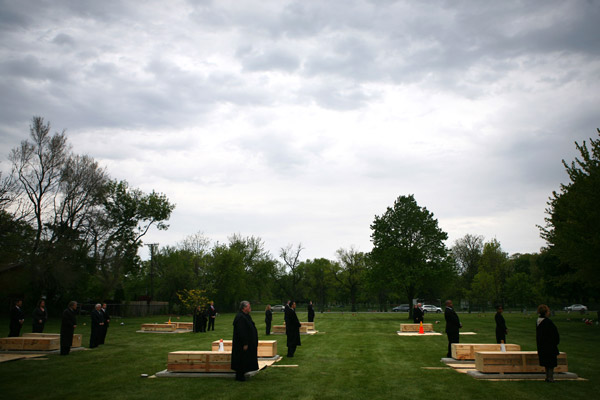
There was a bit of a fuss online yesterday when the Cook County Medical Examiner's Office announced it was expanding its website to include "a link to unidentified remains aimed at helping family members find a missing loved one." Or phrased differently:

Even the existence of all things on the Internet has not chilled the frisson of a new memento mori. Only it's not exactly new; the handful of bodies pictured on the site (seven photos of three people, with more updates forthcoming) are also on NamUs, the national database of missing and unidentified persons, but the new site is intended to give the information a bit more reach, hopefully to family members.
NamUs actually goes back farther than the County site, at least right now; its earliest unidentified case (here—unsettling, if you're not used to that sort of thing*) is that of a woman found in the Cal-Sag canal in September 1980. Its earliest case dates back to 1915, a man found in the Santa Ana river bottom near Colton, California, hanging from a willow tree:
Clothing found hanging on tree: Tan overcoat/raincoat (dealer label: "Ransom & Salsbee," San Antonio, Texas), a gray hat (dealer label: "Joske Bros. Co Department Store," San Antonio, Texas), a shirt with collar and tie.
NamUs's database is a compendium of eerily incomplete stories: a body found in the Chicago River in Northfield wrapped in a blanket and duct tape in 2003 (the Sun-Times had a very brief blotter item about it); one found in the Illinois & Michigan Shipping Canal near Summit, sunk by weights; one found in an abandoned greeting-card factory; one "suspected to be that of a family member who lived at the residence but would often disappear for weeks to months at a time."
And once you get over the shock of the pictures, the poignant details are just as easily carried by the words: "Lateral right upper arm 'MEMENTO MORI', anterior right forearm indiscernible letters, anterior right forearm multi-pattern design, posterior left forearm indiscernible letters, anterior upper right thigh a cat with a pipe."
* My first job out of college was editorial coordinator for a pathology organization. Translated, that means a lot of what I did—really, the only comprehensible part to me—was reformatting pictures of all the different ways to die, from pastel blood disease slides to washed-out in situ photos of the many ways one can meet his or her end, especially those odd enough to confuse pathologists (auto-erotic asphixiation, carbon monoxide poisoning from a boat's inboard motor). After that, the thing itself stopped being as compelling as the circumstances.
Photograph: Chicago Tribune


